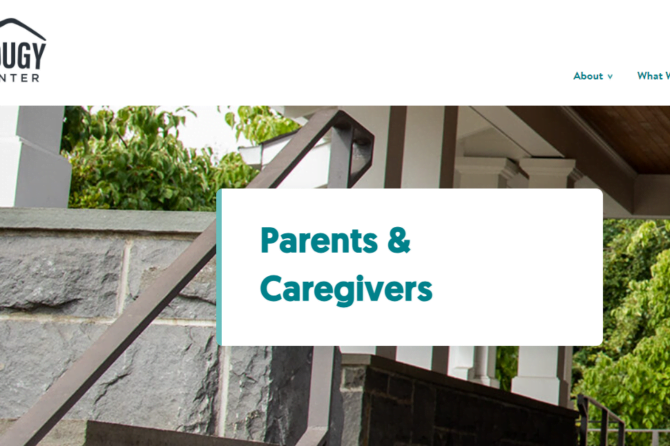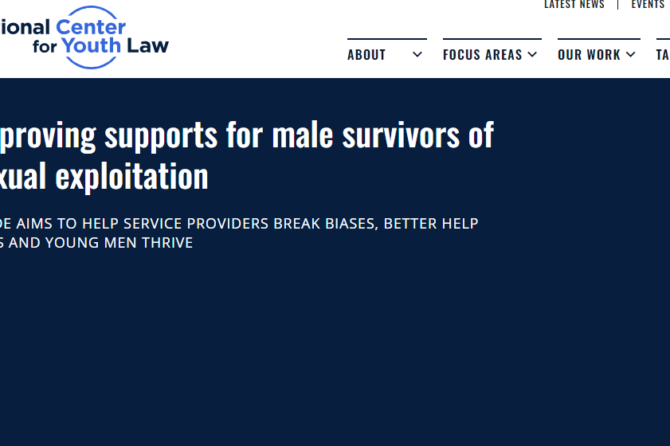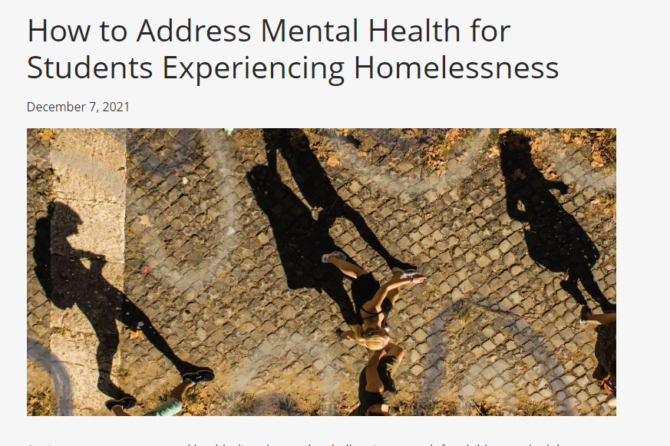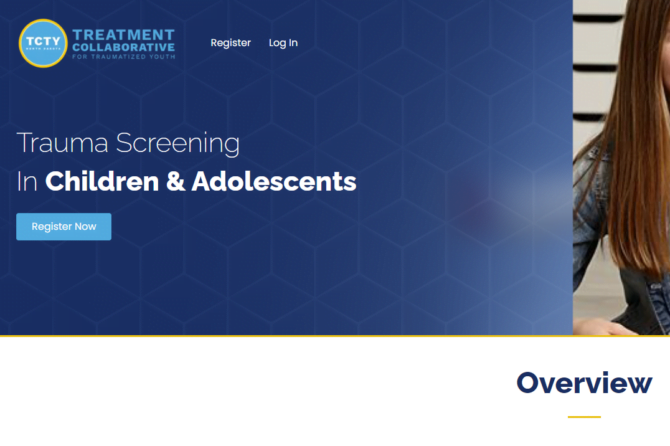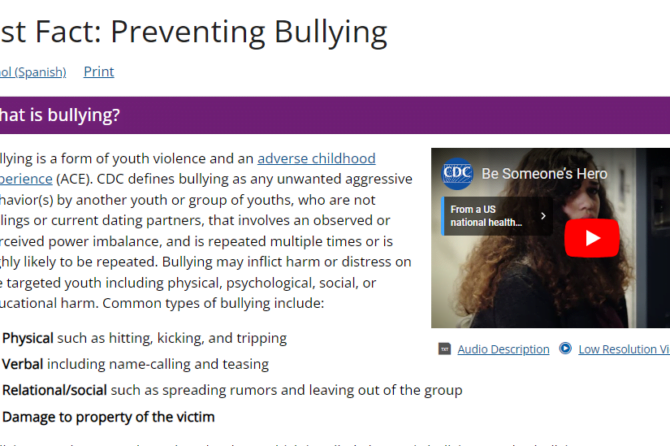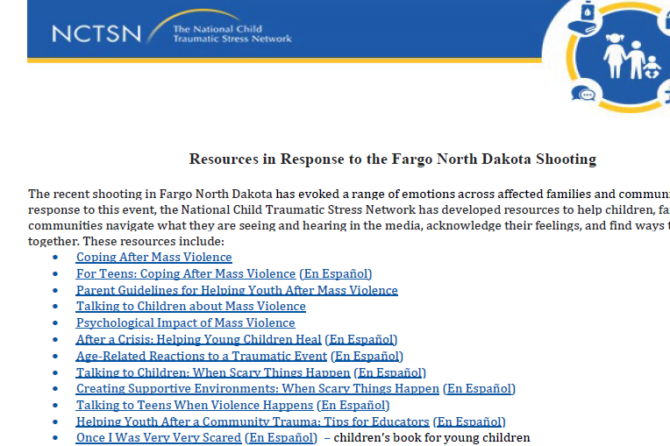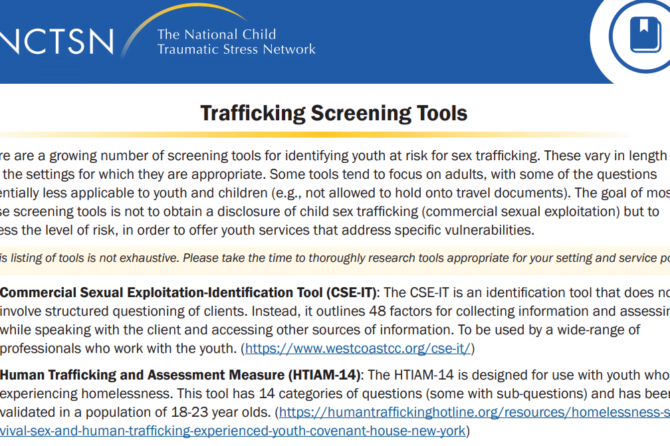
Archives


Grief Support and Resources
This website has grief resources for kids, teens, young adults, parents/caregivers, living with an advanced serious illness and supporters of grievers. Visit the WebsiteRead more
Improving Supports for Male Survivors of Sexual Exploitation
Resource for services providers to help eliminate biases while increasing support and awareness to help boys and young men thrive. There is additional resources listed, including: Understanding the Commercially Sexual Exploitation of Boys & Young Men & Understanding Commercial Sexual Exploitation of LGBTQIA2S+ Youth. Visit the WebsiteRead more
How to Address Mental Health For Students Experiencing Homelessness
This website gives an overview of student homelessness and housing, how this affects their mental health, and strategies for supporting the mental health of students experiencing homelessness. Visit the WebsiteRead more
Trauma Screening in Children & Adolescents
TCTY collaborated with ND Pediatric Mental Health Care Access Program and ND Behavioral Health to develop a website for the training of the trauma screening tool: The University of Minnesota’s Traumatic Stress Screen for Children and Adolescents (TSSCA). Unrecognized and untreated child traumatic stress can lead to the development of trauma-related symptoms. These symptoms canRead more
Complex Trauma Workbook
What is Complex Trauma? A Resource Guide for Youth and Those Who Care About Them. View PDFRead more
University of Minnesota’s Traumatic Stress Screen for Children and Adolescents (TSSCA)
The University of Minnesota’s Traumatic Stress Screen for Children and Adolescents (TSSCA) is designed to provide clinicians, caseworkers, educators, and other staff with a tool for screening children and adolescents (ages 5-18 years) that have or may have experienced a traumatic event and are in need of services. View PDFRead more
Resources in Response to the Fargo North Dakota Shooting
In response to the recent events affecting our Fargo, ND community, NCTSN has created this resource guide for those seeking information on next steps. View PDFRead moreHelping Survivors of Sexual Abuse & Assault
This website has sexual abuse resources for survivors, families, and child serving professionals, including risk factors, sign, how to respond, and education about grooming. Visit the WebsiteRead more
© 2024 Treatment Collaborative for Traumatized Youth. All rights reserved.

